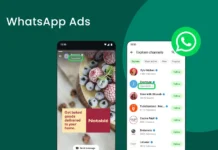TikTok is giving users the power to reduce the amount of artificial intelligence-made content on their feeds, as it revealed the platform hosts more than 1bn AI videos.
The change, which is being tested over the next few weeks before a global rollout, comes as new video-generating tools such as OpenAI’s Sora and Google’s Veo 3 have spurred a surge in AI content online.
The Guardian revealed in August that nearly one in 10 of the fastest-growing YouTube channels globally only show AI-generated videos. Many qualify as “AI slop”, the term for low-quality, mass-produced content that is often nonsensical or surreal.
Jade Nester, TikTok’s European director of public policy for safety and privacy, said: “We know from our community that many people enjoy content made with AI tools, from digital art to science explainers, and we want to give people the power to see more or less of that, based on their own preferences.”
TikTok, which revealed the change at its annual European trust and safety forum in Dublin, said there are now 1.3bn videos on its platform labelled as AI-generated. Overall, more than 100m pieces of content are uploaded to TikTok every day, making AI content a small part of its overall inventory.
Users will be able to reduce or increase the amount of AI content they view by opening the “manage topic” setting on the app and choosing “AI-generated content”.
Other topics that can already be reduced or increased under the filter include current affairs, fashion, beauty and dance.
TikTok’s guidelines require creators to label “realistic” AI-made content, and it bans harmful deepfakes of public figures or crisis events. Any realistic AI video that is not labelled can be taken down under its community policies.
In addition, the app will now attach an “AI-made” watermark to content made with its own AI tools or flagged by an industry-wide initiative for identifying AI-generated material called C2PA. TikTok said the move will help prevent users from trying to evade the labelling process.
TikTok is also launching a Ksh 258 million AI literacy fund for experts and organisations such as Girls Who Code, a non-profit group teaching programming and robotics, to create educational content about using AI responsibly.
The video-sharing app has defended its moderation strategy, amid controversy over plans to make hundreds of UK-based content moderators redundant.
TikTok is set to cut 439 jobs in its trust and safety team in London, with trade unions and online safety experts raising concerns that humans are being replaced by AI moderation.
Brie Pegum, TikTok’s global head of program management for trust and safety, said human moderation would still have a role, but AI can protect employees by removing the most distressing content before it has to be seen by humans.
TikTok said there had been a 76% decrease in shocking and graphic content seen by human moderators over the past year due to intervention by its automated systems.
“We think that it’s essential to balance humans and technology to keep the platform safe,” she said. “We’ll have humans as part of that process, but we also think it’s very important to reduce exposure to harmful content as quickly as possible, which is where a lot of the machine support is really helping us work at speed.”


















